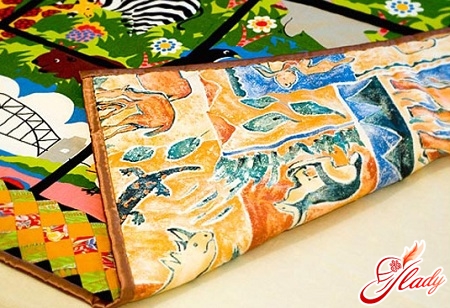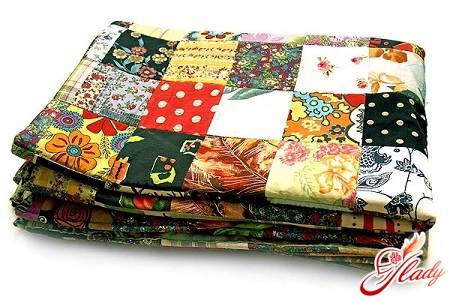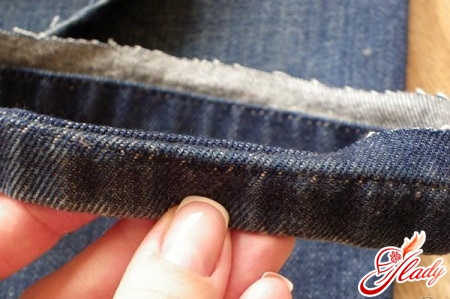 Getting infected with an interesting idea is a piece of cake.Especially if this idea is not just in the air, but has already taken hold of many, many minds. And if there are plenty of “sick” people around, then the healthy ones quickly (and willingly) catch this virus. For example, the fashion for a certain type of handicraft (knitting, beading, quilling) instantly spreads, easily bypassing the borders of countries and cultures. Anglo-American patchwork is proof of this. And patchwork for beginners is not just a “disease”, but a real obsession. After all, if you are still a beginner in this incredibly exciting business, then you strive to reach certain heights as soon as possible. However, you will not be able to learn everything at once and first you need to master the basics of this technique.
Getting infected with an interesting idea is a piece of cake.Especially if this idea is not just in the air, but has already taken hold of many, many minds. And if there are plenty of “sick” people around, then the healthy ones quickly (and willingly) catch this virus. For example, the fashion for a certain type of handicraft (knitting, beading, quilling) instantly spreads, easily bypassing the borders of countries and cultures. Anglo-American patchwork is proof of this. And patchwork for beginners is not just a “disease”, but a real obsession. After all, if you are still a beginner in this incredibly exciting business, then you strive to reach certain heights as soon as possible. However, you will not be able to learn everything at once and first you need to master the basics of this technique.
How to learn patchwork?
It is best to start attending special courses.Here you will not only be able to master an interesting type of needlework, but also find new friends and like-minded people. This is, of course, great, but not always convenient. Therefore, many dare to learn patchwork on their own. By the way, patchwork does not always use sewing, but also knitting. Therefore, if knitting is already a familiar type of "handicraft" for you, then you can diversify your hobby and master the patchwork technique, which uses knitting, not sewing. In addition to attending courses, you can use tutorials by purchasing a printed publication or finding the necessary manuals on the Internet. And, of course, you can not ignore the educational videos that are abundantly posted on the World Wide Web. Craftswomen willingly share their own experience, filming patchwork lessons on video and providing them for free use to their colleagues. The training period does not depend on which technology (knitting or sewing) you prefer, but you can quickly learn patchwork only with some experience. Therefore, if you are familiar with knitting, then stop at knitted patchwork, and if you are good at sewing, then start with the traditional technology (sewing fabric scraps). For those who do not yet know how to knit or sew, it is preferable to work with fabric. Ready-made scraps are easier to sew than to prepare knitted blanks for patchwork (knitting as a handicraft also needs to be mastered). This means that patchwork for beginners is traditional patchwork, the basics of which we will talk about.
Tools for Patchwork Sewing
In fact, patchwork is quite easy to master:It does not require extensive sewing knowledge, nor any special equipment. All you will need to master the basics of patchwork is:
- cloth flaps;
- thread;
- sewing needles;
- sewing (with a round head) or safety pins;
- scissors;
- centimeter tape, ruler and ruler-triangle;
- chalk or pencil;
- thimble.
In addition, in patchwork sewing there is such a conceptas a "template". This is a tool made of thick paper or cardboard, with the help of which individual parts of a certain shape are cut out. Templates are made in the form of frames, the inner side of which is equal to the dimensions of the part in the finished product, and the outer side defines its boundaries with seam allowances. Naturally, for patchwork sewing you may also need a sewing machine. It is convenient to work with it, and the products are made much faster than when sewing by hand. However, you can do without a sewing machine, especially at the very beginning of mastering the patchwork technique. Therefore, the lack of a machine should not stop you from wanting to learn patchwork.
With what to begin?
Surprisingly, it is time to start learningpatchwork technique, it is desirable to start with making large items. And even if some patchwork manuals recommend starting with some kind of potholder for the kitchen, it is better to take on a traditional patchwork blanket (bedspread). Firstly, the result will be impressive enough (unlike a modest potholder) to surprise your loved ones. Secondly, it is more convenient to master this technique on a large item, working with large pieces of fabric. And, thirdly, you will need no more time to make a large blanket than to assemble a patchwork mosaic for a potholder. So do not skimp! Prepare the fabric, choose a pattern and start your first (test) creation. By the way, it is also best to start work with simple cotton fabric, for example, chintz.
Preparation of tissue
Simply choosing a fabric is not enough.Even if you intend to cut out patches from brand new chintz, it needs to be washed and ironed, and, oddly enough, this is not so easy. It is necessary to wash (or simply wet) the fabric, because after washing it can shrink, and in the finished product this is fraught with unpleasant consequences in the form of distortions, wrinkles and creases. In addition, many fabrics can fade during the first wash. By the way, such preparation also has a professional name "decating". Next, it is advisable to starch the fabric - this will make it easier to work with. After this, the material needs to be dried (until slightly damp) without wringing, but simply hanging it on a rope or crossbar. And the next stage of preparation will be ironing. You need to iron the fabric along the grain, from the wrong side, and it is best to use an iron with a steamer for this.
Cutting rules
Before cutting, be sure to draw a sketch of the finished product and count the number of parts. When cutting, take into account two important points:
- You can not draw on the fabric with ball or gelhandles. Use chalk, soap or a simple pencil for this. Otherwise, ink will appear from the front side of the fabric and spoil the appearance of the finished product.
- Kroite fabric only along the share strand (orientate to the edge). Otherwise, the cut out flaps may become warped and lose shape.
Also, don't forget to usetemplates. When outlining a template, make two lines on the fabric at once - a cutting line and a sewing line (lines). Another option is to cut out the parts and then apply a line of stitching to them (strictly along the ruler, observing the exact dimensions). And then you will only have to sort the scraps, laying them out in boxes and bags. Naturally, for work you also need to choose a pattern, and also decide on the sewing technique. But this is a separate conversation. We recommend reading:









